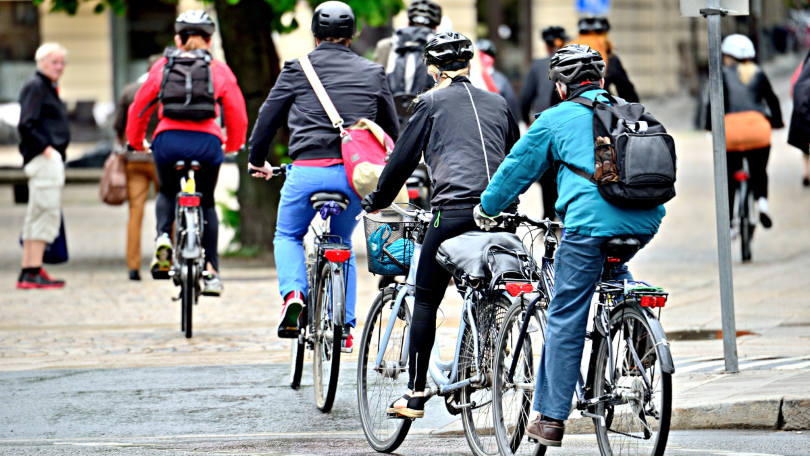
Source: Adobe Stock / connel_design
Since 2009, the German Federal Ministry for Digital and Transport (BMDV) has funded the representative Cycling Monitor survey, which is conducted every two years by the SINUS-Institut.
The 2023 edition of the Cycling Monitor shows an encouraging trend: Cycling continues to be on the rise in Germany. For the survey, 4,003 citizens between the ages of 14 and 69 were interviewed about their mobility preferences and habits.
Increasing interest and high willingness to purchase a bike
The outcome of the survey shows that 46% of the people in Germany want to use a bike or a pedelec more frequently in the future. Especially good news for the cycling industry is that 25% of the Germans plan to buy a bike or a pedelec within the next year. They are willing to spend a considerable sum on it – an average of 1,424 euros per person. Pedelecs are particularly in demand among the prospective buyers, with a preference of 48%.
Bicycle use and perceived safety at a stable level
With 39% of the respondents stating that they cycle regularly, the bicycle's popularity as a regular means of transport remains unchanged. In comparison with the previous Cycling Monitor from 2021, bicycle use is now distributed more evenly across the various age groups. Elderly persons are now using bikes just about as regularly as younger people. It is also encouraging that 60% of the respondents feel very or mostly safe when cycling. The main reasons why respondents feel unsafe are drivers’ lack of consideration towards cyclists as well as too much traffic on the roads.
Cyclists feel safest on separate cycle tracks
For the first time, the 2023 survey also polled cyclists on how safe they feel depending on the different types of cycling infrastructure. 94% of the respondents stated that they feel safest on cycle tracks that are physically separated from car and pedestrian traffic. This also includes protected bike lanes which are segregated from motor traffic by bollards or similar separating elements. Cycle-only roads, too, were viewed in a very positive light (83%). In contrast, cyclists feel especially unsafe on roads where they have to share the carriageway with motor traffic. Here, only 13% feel safe on roads where a speed limit of 50 km/h applies. Only 21% of the respondents feel safe on roads with a speed limit of 30 km/h and on bus-only lanes where cycle traffic is allowed, only 29% feel safe.
Cycling and public transport: a win-win situation
More than one person out of five currently commutes to work regularly by bike or pedelec. The main reasons given by cyclists who rarely or never travel to work by bike are that the journey is too far or takes too long. In this context, the results of the 2023 Cycling Monitor highlight the growing importance of combining bicycle use with public transport. This is not only beneficial to the environment, but also extends the range of action of both means of transport. As the results of the survey show, it is important to the majority of cyclists to be able to take their bike on public transport, especially local and regional services.
About the Cycling Monitor study
The Cycling Monitor is a representative survey conducted for the eighth time by the SINUS-Institut and funded by the Federal Ministry for Digital and Transport.
Every two years, it surveys the subjective sentiment of cyclists in Germany.
For the current 2023 edition, 4,003 citizens between the ages of 14 and 69 provided details on their mobility behaviour and preferences with a focus on cycling in an online survey between Mid-May and early June 2023. The sample is representative for the resident population of Germany by gender, age, education level and size of town/city (quota sample).
The Cycling Monitor is funded by the Federal Ministry for Digital and Transport as part of the guidelines for the promotion of non-capital projects to implement the National Cycling Plan.
You can find the detailed results of the 2023 Cycling Monitor as well as the editions of the previous years under FURTHER INFORMATION.